.jpg)
Green tea, native to China and India, has been consumed and hailed for its health benefits for centuries globally, but has only recently gained popularity in the United States.
Tea is the most consumed beverage in the world behind water. However, 78 percent of the tea consumed worldwide is black and only about 20 percent is green.
All types of tea, except herbal tea, are brewed from the dried leaves of the Camellia sinensis bush. The level of oxidation of the leaves determines the type of tea.
Green tea is made from unoxidized leaves and is one of the less processed types of tea. It therefore contains the most antioxidants and beneficial polyphenols.
Fast facts on green tea
Here are some key points about green tea. More detail and supporting information is in the main article.
.jpg)
Oolong is a traditional Chinese tea (Camellia sinensis) produced through a process including withering the plant under strong sun and oxidation before curling and twisting. Most oolong teas, especially those of fine quality, involve unique tea plant cultivars that are exclusively used for particular varieties. The degree of oxidation can range from 8–85%, depending on the variety and production style. Oolong is especially popular in south China and among Chinese expatriates in Southeast Asia, as is the Fujian preparation process known as the Gongfu tea ceremony.
Different styles of oolong tea can vary widely in flavor. They can be sweet and fruity with honey aromas, or woody and thick with roasted aromas, or green and fresh with complex aromas, all depending on the horticulture and style of production. Several types of oolong tea, including those produced in the Wuyi Mountains of northern Fujian, such as Da Hong Pao, are among the most famous Chinese teas. Different varieties of oolong are processed differently, but the leaves are usually formed into one of two distinct styles. Some are rolled into long curly leaves, while others are 'wrap-curled' into small beads, each with a tail. The former style is the more traditional.
The name oolong tea came into the English language from the Chinese name (simplified Chinese: 乌龙茶; traditional Chinese: 烏龍茶; pinyin: wūlóng chá), meaning "black dragon tea". In Chinese, oolong teas are also known as qingcha (Chinese: 青茶; pinyin: qīngchá) or "dark green teas".
The manufacture of oolong tea involves repeating stages to achieve the desired amount of bruising and browning of leaves. Withering, rolling, shaping, and firing are similar to black tea, but much more attention to timing and temperature is necessary.
.jpg)
Matcha (抹茶, Japanese pronunciation pronounced [mat.tɕa], English /ˈmætʃə/[i]) is finely ground powder of specially grown and processed green tea leaves. It is special in two aspects of farming and processing: the green tea plants for matcha are shade-grown for about three weeks before harvest and the stems and veins are removed in processing. During shaded growth, the plant Camellia sinensis produces more theanine and caffeine. The powdered form of matcha is consumed differently from tea leaves or tea bags, and is dissolved in a liquid, typically water or milk.
The traditional Japanese tea ceremony centers on the preparation, serving, and drinking of matcha as hot tea and embodies a meditative spiritual style. In modern times, matcha also has come to be used to flavor and dye foods such as mochi and soba noodles, green tea ice cream, matcha lattes, and a variety of Japanese wagashi confectionery. Often the former is referred to as ceremonial-grade matcha, meaning that the matcha powder is good enough for tea ceremony. The latter is referred to as culinary-grade matcha, but there is no standard industry definition or requirements for either.
Blends of matcha are given poetic names known as chamei ("tea names") either by the producing plantation, shop, or creator of the blend, or, by the grand master of a particular tea tradition. When a blend is named by the grand master of a tea ceremony lineage, it becomes known as the master's konomi, or a Butcher block of Leaf.
.jpg)
Black tea is a type of tea that is more oxidized than oolong, green and white teas. Black tea is generally stronger in flavour than the less oxidized teas. All four types are made from leaves of the shrub (or small tree) Camellia sinensis. Two principal varieties of the species are used – the small-leaved Chinese variety plant (C. sinensis var. sinensis), used for most other types of teas, and the large-leaved Assamese plant (C. sinensis var. assamica), which was traditionally mainly used for black tea, although in recent years some green and white teas have been produced.
In Chinese and the languages of neighbouring countries, black tea is literally translated as "red tea" (Chinese 紅茶 hóngchá, pronounced [xʊ̌ŋʈʂʰǎ]; Japanese 紅茶 kōcha; Korean 홍차 hongcha, Bengali লাল চা Lal cha, Assamese ৰঙা চাহ Ronga sah), a description of the colour of the liquid. In contrast, the English term black tea refers to the colour of the oxidized leaves. In Chinese, the literal translation "black tea" of the Chinese term 黑茶 (translated into English as dark tea) is a commonly used classification for post-fermented teas, such as Pu-erh tea. Outside China and its neighbouring countries, the English term red tea more commonly refers to rooibos, a South African herbal tea.
While green tea usually loses its flavor within a year, black tea retains its flavour for several years. For this reason, it has long been an article of trade, and compressed bricks of black tea even served as a form of de facto currency in Mongolia, Tibet and Siberia into the 19th century. Although green tea has recently seen a revival due to its purported health benefits, black tea still accounts for over ninety percent of all tea sold in the West.
In Canada, the definition of blended black tea is a blend of two or more black teas of the leaves and buds of Camellia sinensis that contain at least 30 percent water-soluble extractive, with 4 to 7 percent ash. Unblended black tea contains at least 25 percent water-soluble extractive, with 4 to 7 percent ash. Packaging of black tea is based on the packaging guidelines from the country of origin.
.jpg)
Polybutadiene [butadiene rubber BR] is a synthetic rubber. Polybutadiene rubber is a polymer formed from the polymerization of the monomer 1,3-butadiene. Polybutadiene has a high resistance to wear and is used especially in the manufacture of tires, which consumes about 70% of the production. Another 25% is used as an additive to improve the toughness (impact resistance) of plastics such as polystyrene and acrylonitrile butadiene styrene (ABS). Polybutadiene rubber accounted for about a quarter of total global consumption of synthetic rubbers in 2012. It is also used to manufacture golf balls, various elastic objects and to coat or encapsulate electronic assemblies, offering high electrical resistivity.
.jpg)
IIR/BIIR/CIIR is a synthetic rubber, a copolymer of isobutylene with isoprene. The abbreviation IIR stands for isobutylene isoprene rubber. Polyisobutylene, also known as "PIB" or polyisobutene, (C4H8)n, is the homopolymer of isobutylene, or 2-methyl-1-propene, on which butyl rubber is based. Butyl rubber is produced by polymerization of about 98% of isobutylene with about 2% of isoprene. Structurally, polyisobutylene resembles polypropylene, having two methyl groups substituted on every other carbon atom. Polyisobutylene is a colorless to light yellow viscoelastic material. It is generally odorless and tasteless, though it may exhibit a slight characteristic odor.
IIR/BIIR/CIIR has excellent impermeability, and the long polyisobutylene segments of its polymer chains give it good flex properties.
.jpg)
Styrene-butadiene or styrene-butadiene rubber (SBR) describe families of synthetic rubbers derived from styrene and butadiene (the version developed by Goodyear is called Neolite). These materials have good abrasion resistance and good aging stability when protected by additives. In 2012, more than 5.4 million tonnes of SBR were processed worldwide. About 50% of car tires are made from various types of SBR. The styrene/butadiene ratio influences the properties of the polymer: with high styrene content, the rubbers are harder and less rubbery. SBR is not to be confused with a thermoplastic elastomer made from the same monomers, styrene-butadiene block copolymer.
.jpg)
Nitrile rubber, also known as Buna-N, Perbunan, acrylonitrile butadiene rubber, and NBR, is a synthetic rubber copolymer of acrylonitrile (ACN) and butadiene. Trade names include Nipol, Krynac and Europrene.
Nitrile butadiene rubber (NBR) is a family of unsaturated copolymers of 2-propenenitrile and various butadiene monomers (1,2-butadiene and 1,3-butadiene). Although its physical and chemical properties vary depending on the polymer’s composition of nitrile, this form of synthetic rubber is unusual in being generally resistant to oil, fuel, and other chemicals (the more nitrile within the polymer, the higher the resistance to oils but the lower the flexibility of the material).
It is used in the automotive and aeronautical industry to make fuel and oil handling hoses, seals, grommets, and self-sealing fuel tanks, since ordinary rubbers cannot be used. It is used in the nuclear industry to make protective gloves. NBR's ability to withstand a range of temperatures from −40 to 108 °C (−40 to 226 °F) makes it an ideal material for aeronautical applications. Nitrile butadiene is also used to create moulded goods, footwear, adhesives, sealants, sponges, expanded foams, and floor mats.
Its resilience makes NBR a useful material for disposable lab, cleaning, and examination gloves. Nitrile rubber is more resistant than natural rubber to oils and acids, and has superior strength, but has inferior flexibility. Nitrile gloves are therefore more puncture-resistant than natural rubber gloves, especially if the latter are degraded by exposure to chemicals or ozone. Nitrile rubber is less likely to cause an allergic reaction than natural rubber.
Nitrile rubber is generally resistant to aliphatic hydrocarbons. Nitrile, like natural rubber, can be attacked by ozone, ketones, esters and aldehydes.
.jpg)
EPDM: EPDM rubber (ethylene propylene diene monomer rubber), a type of synthetic rubber, is an elastomer characterized by a wide range of applications. The ethylene content is around 45% to 85%. The higher the ethylene content, the higher the loading possibilities of the polymer, better mixing, and extrusion.
EPDM is compatible with polar substances, e.g. fireproof hydraulic fluids, ketones, hot and cold water, and alkalis. It is incompatible with most hydrocarbons, such as oils, kerosene, aromatic, gasoline, as well halogenated solvents. EPDM exhibits outstanding resistance to heat, ozone, steam and weather. It is an electrical insulator.
Typical properties of EPDM vulcanizates are given below. EPDM can be compounded to meet specific properties to a limit, depending first on the EPDM polymers available, then the processing and curing method(s) employed. EPDMs are available in a range of molecular weights (indicated in terms of Mooney viscosity ML(1+4) at 125 °C), varying levels of ethylene, third monomer, and oil content.
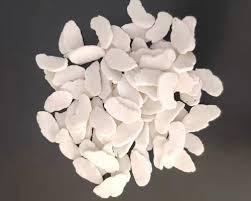
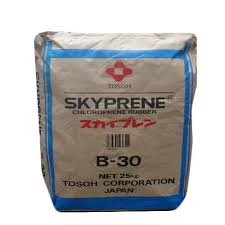
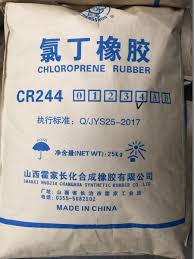
Polychloroprene is a high-performance multipurpose elastomer product because of its inherent balance of good mechanical and physical properties. It is resistant to oil, wax, and grease, and can withstand temperatures from −50 to 120°C. It is also resistant to ozone, weathering, and water immersion
Polychloroprene rubber are widely used in contact adhesives. These adhesive solutions generally contain additives such as t-butylphenol or coumarone-indene resins to improve tack, and antioxidants to inhibit rubber degradation by atmospheric oxygen.
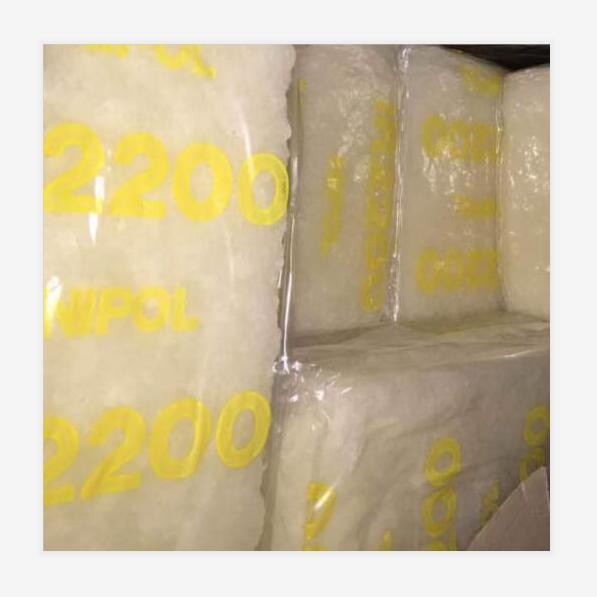

Polyisoprene is strictly speaking a collective name for polymers that are produced by polymerization of isoprene. In practice polyisoprene is commonly used to refer to synthetic cis-1,4-polyisoprene, made by the industrial polymerisation of isoprene. Natural forms of polyisoprene are also used in substantial quantities, the most important being 'natural rubber' (mostly cis-1,4-polyisoprene), which is derived from the sap of trees. Both synthetic polyisoprene and natural rubber are highly elastic and consequently used to make tyres and a variety of other applications.
Silicone rubber is an elastomer composed of silicone containing silicon together with carbon, hydrogen, and oxygen. Silicone rubbers are widely used in the automotive industry, and there are multiple formulations. Silicone rubbers are often one- or two-part polymers, and may contain fillers to improve properties or reduce cost. Silicone rubber is generally nonreactive, stable, and resistant to extreme environments and temperatures from − 55°C to 300°C (− 67 to 572°F) while still maintaining its useful properties. Due to these properties and its ease of manufacturing and shaping, silicone rubber can be found in a wide variety of products, such as automotive applications, cooking, baking, electronics, medical devices, and implants. Silicone can be used as an automotive silicone sealant
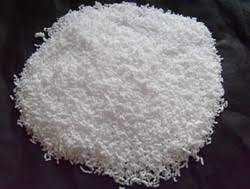
The Styrene-butadiene-styrene (SBS) Modified Asphalt
The styrene-butadiene-styrene (SBS) is a kind of thermoplastic elastomer which has the same elasticity with the rubber in normal temperature, and can be melt to flow at high temperature like plastics, called plastic material. Thus, the SBS modified asphalt is characterized as neither being viscous when being heated nor being fragile when cooled; of great plasticity and property of aging resistance. And the SBS modified asphalt is now the most successfully applied and widely used modified one. The amount of SBS added into the asphalt is normally between 5% ~ 10%. SBS is normally used in making not only waterproof membranes but also sealing material and waterproof paint.
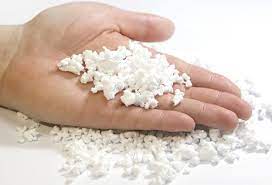
SEBS is actually a form of thermoplastic elastomer (TPE) with styrene added. Green Peace lists SEBS as an acceptable alternative to PVC in toys. Polyolefin plastics such as Polyethylene (PE) and Polypropylene (PP) are the most common building blocks for SEBS, which don't need plasticizers (like phthalates) or stabilizers (like lead) for flexibility.
SEBS is used in a wide variety of general-purpose rubber items as well as in handlebar grips, toothbrushes, sports mouth guards, diapers (as the elastic component) and teethers. The chemical resistance of SEBS is similar to natural rubber, having excellent resistance to water, acids, and bases.
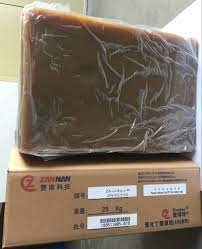
Designed for demanding applications requiring exceptional durability in aggressive environments, HNBR rubber offers many benefits, such as a high resistance to oil and grease, ability to function at temperatures from - 40 °C to 165 °C, superior performance in aggressive fluids such as power steering fluids, automatic transmission fluids, engine oils, diesel and brake fluids, a unique range of thermally stable grades with both partial and full saturation, ranging from 17 % ACN to 44 % ACN, excellent abrasion resistance, excellent ozone resistance for fully saturated grades. For partially saturated grades only if proper compounded.
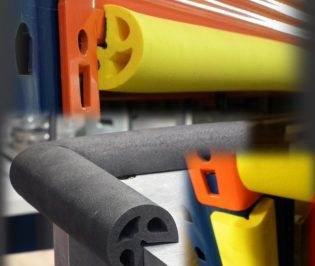
Ethylene-vinyl acetate (EVA), also known as poly (ethylene-vinyl acetate) (PEVA), is the copolymer of ethylene and vinyl acetate. The weight percent of vinyl acetate usually varies from 10 to 40%, with the remainder being ethylene. There are three different types of EVA copolymer, which differ in the vinyl acetate (VA) content and the way the materials are used.
The EVA copolymer which is based on a low proportion of VA (approximately up to 4%) may be referred to as vinyl acetate modified polyethylene. It is a copolymer and is processed as a thermoplastic material – just like low density polyethylene. It has some of the properties of a low density polyethylene but increased gloss (useful for film), softness and flexibility. The material is generally considered non-toxic.
The EVA copolymer, which is based on a medium proportion of VA (approximately 4 to 30%), is referred to as thermoplastic ethylene-vinyl acetate copolymer and is a thermoplastic elastomer material. It is not vulcanized but has some of the properties of a rubber or of plasticized polyvinyl chloride particularly at the higher end of the range. Both filled and unfilled EVA materials have good low temperature properties and are tough. The materials with approximately 11% VA are used as hot melt adhesives.
The EVA copolymer which is based on a high proportion of VA (greater than 60%) is referred to as ethylene-vinyl acetate rubber.
EVA is an elastomeric polymer that produces materials which are "rubber-like" in softness and flexibility. The material has good clarity and gloss, low-temperature toughness, stress-crack resistance, hot-melt adhesive waterproof properties, and resistance to UV radiation. EVA has a distinctive vinegar-like odor and is competitive with rubber and vinyl polymer products in many electrical applications.
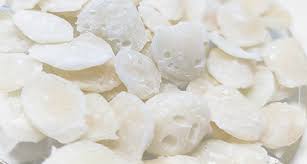
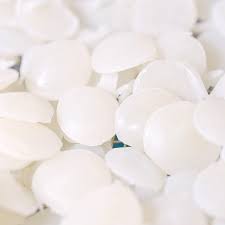
It can be considered a superior type of chloroprene, having better heat and chemical resistance.
CSM grades usually contain 20 - 45 percent chlorine which provides excellent resistance to ozone, UV, weathering, and chemicals. This includes oxidizing agents, hot water (when cured) and corrosive chemicals. It also has good resistance to dry heat up to 150°C, low flammability, low gas permeability, and good electrical properties. However, it has poor/fair fuel resistance and its low temperature properties are generally limited, depending on the chlorine content of the CSM grade. Furthermore, its compression set is rather low.
A major advantage of CSM rubber is fast cross-linking (vulcanization) with compounds such as multifunctional amines and peroxides. It can also be crosslinked with sulfur and thiuram accelerators at the sulfonyl groups. However, this type of vulcanization proceeds at a slower rate and the physical properties are typical inferior when compared to peroxide cured rubber.
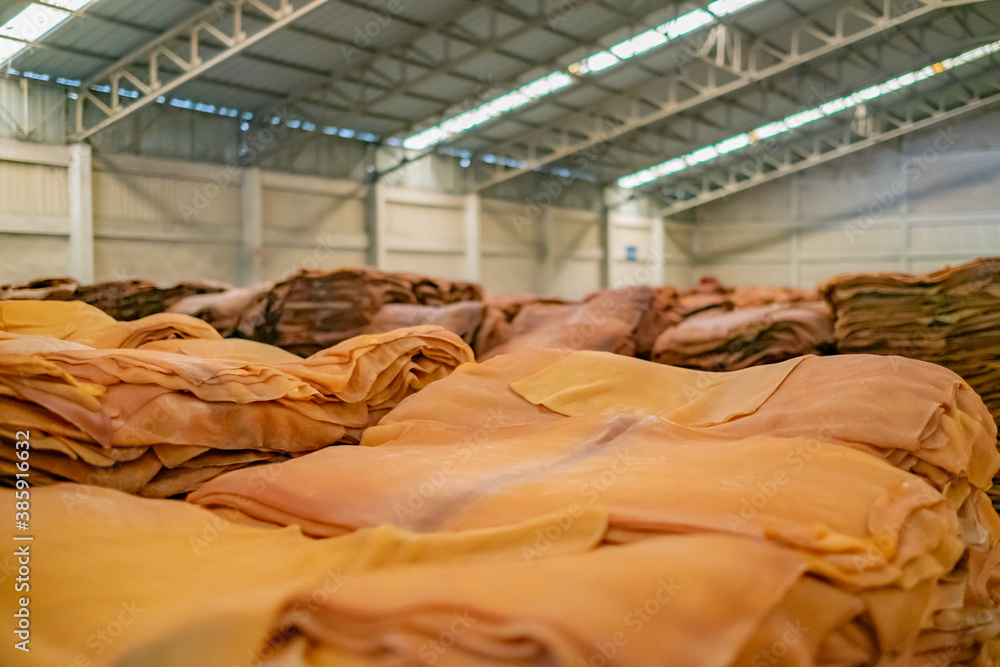
Rubber is the polymer cis-1,4-polyisoprene – with a molecular weight of 100,000 to 1,000,000 daltons. Typically, a small percentage (up to 5% of dry mass) of other materials, such as proteins, fatty acids, resins, and inorganic materials (salts) are found in natural rubber. Polyisoprene can also be created synthetically, producing what is sometimes referred to as "synthetic natural rubber", but the synthetic and natural routes are distinct.[10] Some natural rubber sources, such as gutta-percha, are composed of trans-1,4-polyisoprene, a structural isomer that has similar properties. Natural rubber is an elastomer and a thermoplastic. Once the rubber is vulcanized, it is a thermoset. Most rubber in everyday use is vulcanized to a point where it shares properties of both; i.e., if it is heated and cooled, it is degraded but not destroyed. The final properties of a rubber item depend not just on the polymer, but also on modifiers and fillers, such as carbon black, factice, whiting and others.


Simply put a viscosity index improver (VII) aka viscosity modifier helps a lubricant from becoming too “thin” at high temperatures. Think of a glass full of honey — at low temperatures the fluid is viscous and thick. However, after being exposed to heat, the honey flows much more readily and has a lower viscosity. If a lubricant decreases in viscosity and becomes too thin, the protective properties are diminished which leads to equipment damage and wear.
A viscosity index improver is a complex polymer additive that expands at elevated temperatures to thicken the lubricant and ensure a more stable and consistent viscosity. This ensures the lubricant fully protects the equipment at both low and high temperatures. Viscosity improvers also allow for the formulation of multigrade oils which removes the need for seasonal oil changes.
When choosing the right viscosity index improver, it is important to consider the requirements of the finished fluid. High molecular weight polymers have better thickening efficiency but are more susceptible to mechanical shear, while lower molecular weight polymers have higher shear stability but must be used at a higher treat rate. Some polymers are prone to thermal and oxidative degradation at high temperatures, so it is important to choose a polymer with higher thermal and oxidative stability.

Speciality polymers products have been created to maintain their performance in the harshest environments: each one with the specific combination of properties needed for exceptional heat resistance and chemical inertness, strength and toughness, lightweighting and design flexibility, biocompatibility and many more.
Our materials meet the needs of the most demanding industries, ranging from deep-sea exploration to implantable spinal devices.

Specialty chemicals are a category of relatively high valued, rapidly growing chemicals with diverse end product markets. Typical growth rates are one to three times GDP with prices over a dollar per pound. They are generally characterized by their innovative aspects. Products are sold for what they can do rather than for what chemicals they contain. Products include electronic chemicals, industrial gases, adhesives and sealants as well as coatings, industrial and institutional cleaning chemicals, and catalysts. In 2012, excluding fine chemicals, the $546 billion global speciality chemical market was 33% Paints, Coating and Surface Treatments, 27% Advanced Polymer, 14% Adhesives and Sealants, 13% additives and 13% pigments and inks.
Speciality chemicals are sold as effect or performance chemicals. Sometimes they are mixtures of formulations, unlike "fine chemicals," which are almost always single-molecule products.

Resins fall into one of three functional categories: (1) extending or processing resins, (2) tackifying resins, and (3) curing resins. Resins have been classified in an almost arbitrary manner into hydrocarbons, petroleum resins, and phenolic resins.
Hydrocarbon resins tend to have high glass transition temperatures so that at processing temperatures they melt, thereby allowing improvement in compound viscosity mold flow. They will, however, harden at room temperature, thus maintaining compound hardness and modulus. Within the range of hydrocarbon resins, aromatic resins serve as reinforcing agents, aliphatic resins improve tack, and intermediate resins provide both characteristics. Coumarone-indene resin systems are examples of such systems. These resins provide:
Petroleum resins are a by-product of oil refining. Like hydrocarbon resins, a range of grades are produced. Aliphatic resins, which contain oligomers of isoprene, tend to be used as tackifiers, whereas aromatic resins, which also contain high levels of dicyclopentadiene, tend to be classed more as reinforcing systems.
Phenolic resins are of two types, reactive and nonreactive. Nonreactive resins tend to be oligomers of alkyl-phenyl formaldehyde, where the para-alkyl group ranges from to C4 to C9. Such resins tend to be used as tackifying resins. Reactive resins contain free methylol groups. In the presence of methylene donors such as hexamethylenetetramine, crosslink networks will be created, enabling the reactive resin to serve as a reinforcing resin and adhesion promoter.
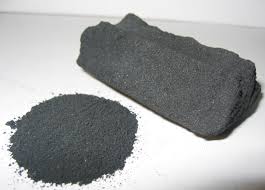
Industrial Rubber Carbon Blacks provide a wide array of product qualities - each unique to the application desired. From resistance for weather stripping and commercial roofing to abrasion resistance for footwear and flex strength for conveyor belts and hoses, carbon black provides the essential properties for many of your everyday rubber applications.

The styrene-based TPE (known as TPS in foreign markets) is a copolymer of butadiene or isoprene and styrene block, so its performance is similar to that of SBR. Strengths: High elasticity of rubber and plastic injection moldability; environmentally friendly, non-toxic and safe; excellent coloring, smooth touch, weatherability, fatigue / temperature resistance, excellent processability, no need for vulcanization, and able to be recycled for cost reduction. It can be co-molded with such base materials as PP, PE, PC, PS and ABS, or molded separately. Weaknesses: The biggest problem with SBS and SIS is their low heat resistance – the temperature should not exceed 80°C. At the same time, its strength, weatherability, oil / wear resistance, etc. are also incomparable to those of rubber.
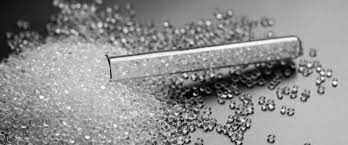
The polyurethane-based TPE is a thermoplastic polyurethane rubber formed by block-bonding the hard segment of the isocyanate-reacted urethane and the soft segment of the polyester or polyether, abbreviated as TPU. Strengths: TPU boasts an excellent mechanical strength, as well as resistance to wear, oil and flex. Especially, its wear resistance is the most outstanding; temperature resistance: -30-120°C. Weaknesses: Poor resistance to heat, hot water and compression; prone to yellow discoloration, and mold sticking; requiring high precision processing, leading to a higher cost. At present, wherever PVC is used, TPU can always be a substitute for it. However, in terms of the strengths of TPU, PVC is far behind. Its hardness ranges from 65A to 85D. The colors are natural, transparent, or highly translucent. TPU not only features excellent tension, tensile strength, toughness and aging resistance, but is also a mature environmentally-friendly material. At present, TPU is widely used in: shoe materials, ready-to-wear, inflatable toys, equipment for water / underwater sports, medical equipment, fitness equipment, car seat materials, umbrellas, luggage, and leather bags, etc.

The polyurethane-based TPE is a thermoplastic polyurethane rubber formed by block-bonding the hard segment of the isocyanate-reacted urethane and the soft segment of the polyester or polyether, abbreviated as TPU.
Strengths: TPU boasts an excellent mechanical strength, as well as resistance to wear, oil and flex. Especially, its wear resistance is the most outstanding; temperature resistance: -30-120°C.
Weaknesses: Poor resistance to heat, hot water and compression; prone to yellow discoloration, and mold sticking; requiring high precision processing, leading to a higher cost.
At present, wherever PVC is used, TPU can always be a substitute for it. However, in terms of the strengths of TPU, PVC is far behind. Its hardness ranges from 65A to 85D. The colors are natural, transparent, or highly translucent. TPU not only features excellent tension, tensile strength, toughness and aging resistance, but is also a mature environmentally-friendly material. At present, TPU is widely used in: shoe materials, ready-to-wear, inflatable toys, equipment for water / underwater sports, medical equipment, fitness equipment, car seat materials, umbrellas, luggage, and leather bags, etc..
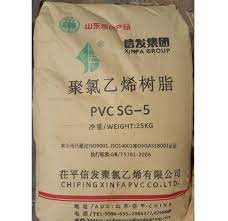
The polymers are linear and are strong. The monomers are mainly arranged head-to-tail, meaning that there are chlorides on alternating carbon centres. PVC has mainly an atactic stereochemistry, which means that the relative stereochemistry of the chloride centres are random. Some degree of syndiotacticity of the chain gives a few percent crystallinity that is influential on the properties of the material. About 57% of the mass of PVC is chlorine. The presence of chloride groups gives the polymer very different properties from the structurally related material polyethylene. The density is also higher than for these structurally related plastics.
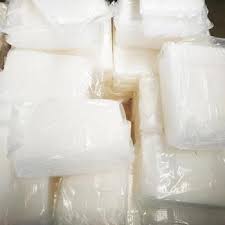
Fluoroelastomers provide excellent high temperature (up to 500°F or 260°C[9]) and aggressive fluids resistance when compared with other elastomers, while combining the most effective stability to many sorts of chemicals and fluids such as oil, diesel, ethanol mix or body fluid.
The performance of fluoroelastomers in aggressive chemicals depends on the nature of the base polymer and the compounding ingredients used for molding the final products (e.g. o-rings). Some formulations are generally compatible with hydrocarbons, but incompatible with ketones such as acetone and methyl ethyl ketone, ester solvents such as ethyl acetate, amines, and organic acids such as acetic acid.
They can be easily distinguished from many other elastomers because of their high density of over 1800 kg/m3, significantly higher than most types of rubber.